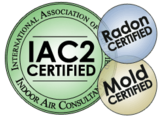 Lets talk about air conditioning system inspections. It’s July in Utah. It’s hot and we’re all trying to stay as cool as possible. Many automatically assume they don’t need an air conditioning system inspections and their air conditioner is functioning at it’s fullest capacity. It’s easy to just keep lowering the indoor temperature as the outdoor temperature rises. Is your air conditioner running at it’s best? When is the last time you changed the filter or cleaned the unit? These simple quick fixes can have a drastic effect on your energy efficiency and also your temperature of your home.
Lets talk about air conditioning system inspections. It’s July in Utah. It’s hot and we’re all trying to stay as cool as possible. Many automatically assume they don’t need an air conditioning system inspections and their air conditioner is functioning at it’s fullest capacity. It’s easy to just keep lowering the indoor temperature as the outdoor temperature rises. Is your air conditioner running at it’s best? When is the last time you changed the filter or cleaned the unit? These simple quick fixes can have a drastic effect on your energy efficiency and also your temperature of your home.
article courtesy of by Nick Gromicko

- Remove any leaves, spider webs and other debris from the unit’s exterior. Trim foliage back several feet from the unit to ensure proper air flow.
- Remove the cover grille to clean any debris from the unit’s interior. A garden hose can be helpful for this task.
- Straighten any bent fins with a tool called a fin comb.
- Add lubricating oil to the motor. Check your owner’s manual for specific instructions.
- Clean the evaporator coil and condenser coil at least once a year. When they collect dirt, they may not function properly.
- Inspect the drain line for obstructions, such as algae and debris. If the line becomes blocked, water will back up into the drain pan and overflow, potentially causing a safety hazard or water damage to your home.
- Make sure the hoses are secured and fit properly.

When the cooling season is over, you should cover the exterior condenser unit in preparation for winter. If it isn’t being used, why expose it to the elements? This measure will prevent ice, leaves and dirt from entering the unit, which can harm components and require additional maintenance in the spring. A cover can be purchased, or you can make one yourself by taping together plastic trash bags. Be sure to turn the unit off before covering it.
- Have the air-conditioning system inspected by a professional each year before the start of the cooling season.
- Reduce stress on the air conditioning system by enhancing your home’s energy efficiency. Switch from incandescent lights to compact fluorescents, for instance, which produce less heat.

